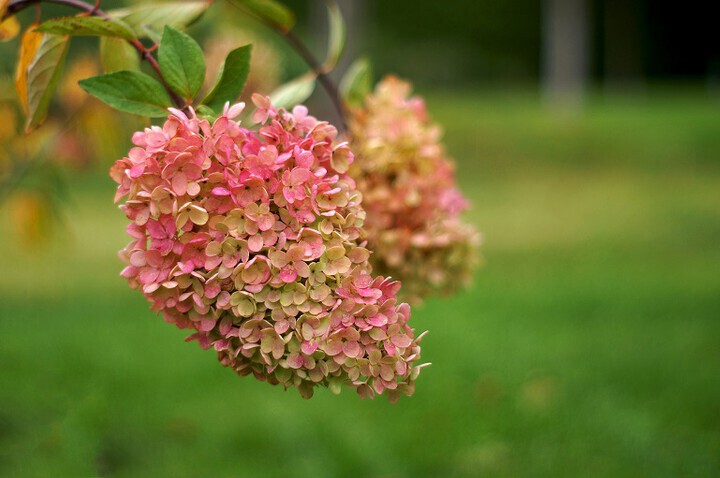Continue to enjoy your favorite summer blooms once the season ends by planting these autumnal varieties.

As summer temperatures dip and cooler fall air moves in, many of the cheery blooms we commonly see during the warm-weather season begin to die off. Normally, they are replaced by the rich autumnal colors that come from mums and changing leaves. However, if you're not quite ready to say goodbye to some of your spring and summer flowers—like hydrangeas, for example—you may want to consider planting some varieties that will bloom well into the fall.
Fall Bloomers
If you're looking for hydrangeas that are going to continue producing large, fluffy blooms even once the weather starts to cool, Justin Hancock, a Monrovia horticultural craftsman, says you'll want to look at Hydrangea paniculata varieties like 'Limelight' and 'Candy Apple,' which bloom in the summer and continue through early autumn. "Re-blooming varieties of Hydrangea macrophylla may produce some blooms into the fall," he adds. "Varieties like 'Seaside Serenade Newport' have flowers that can last for a couple of months—so they can continue to add beauty in autumn with their summer blossoms."
Identifying Hydrangeas
If you're wondering if the hydrangeas you already have at home are fall bloomers, Hancock said it's pretty easy to tell—even before the season turns. "The foliage is usually pretty different," he says. "Hydrangea macrophylla varieties typically have much larger leaves and flowers that appear in more of a cone than a rounded cluster." Additionally, if the flower is blue or you've seen variations of blue, purple, and pink, then you most likely have a macrophylla type. As for identifying the paniculata iteration? "Many Hydrangea paniculata varieties grow substantially larger than their macrophylla cousins," he adds. "But newer breeding strategies bring the size more in line with macrophylla varieties—so that's not a one-size-fits-all guide."
Caring for Fall Bloomers
Fall-blooming hydrangea maintenance is nearly identical to the care required for spring- and summer-loving breeds. They typically enjoy sun (Hydrangea paniculata will do better with more light than Hydrangea macrophylla), though pruning needs may differ. For example, the former can be pruned in late winter and early spring, whereas the later—if they do not re-bloom—are best pruned right after the flowers fade in early to midsummer. But Hancock says that no matter when your hydrangeas typically flower, they all prefer soil that is rich in organic matter; water them enough to keep the soil moist, but not wet.
Bringing Fall Blooms Inside
If you're tempted to clip a few of these autumnal flowers for arranging, Paige Angelique, the owner and creative director at Gilded Grace Floral & Event Design, says to go for it—you just need to be mindful of whether the variety you have blooms on old wood or new. Otherwise, you may run the risk of coming too close to pruning, instead of snipping. "Summer blooming hydrangeas with fresh buds on new wood get trimmed back after they stop blooming in early autumn," she says, so you want to watch that you're not cutting off this next round of autumns blooms. She suggests trimming them after the fullest blooms turn brown.